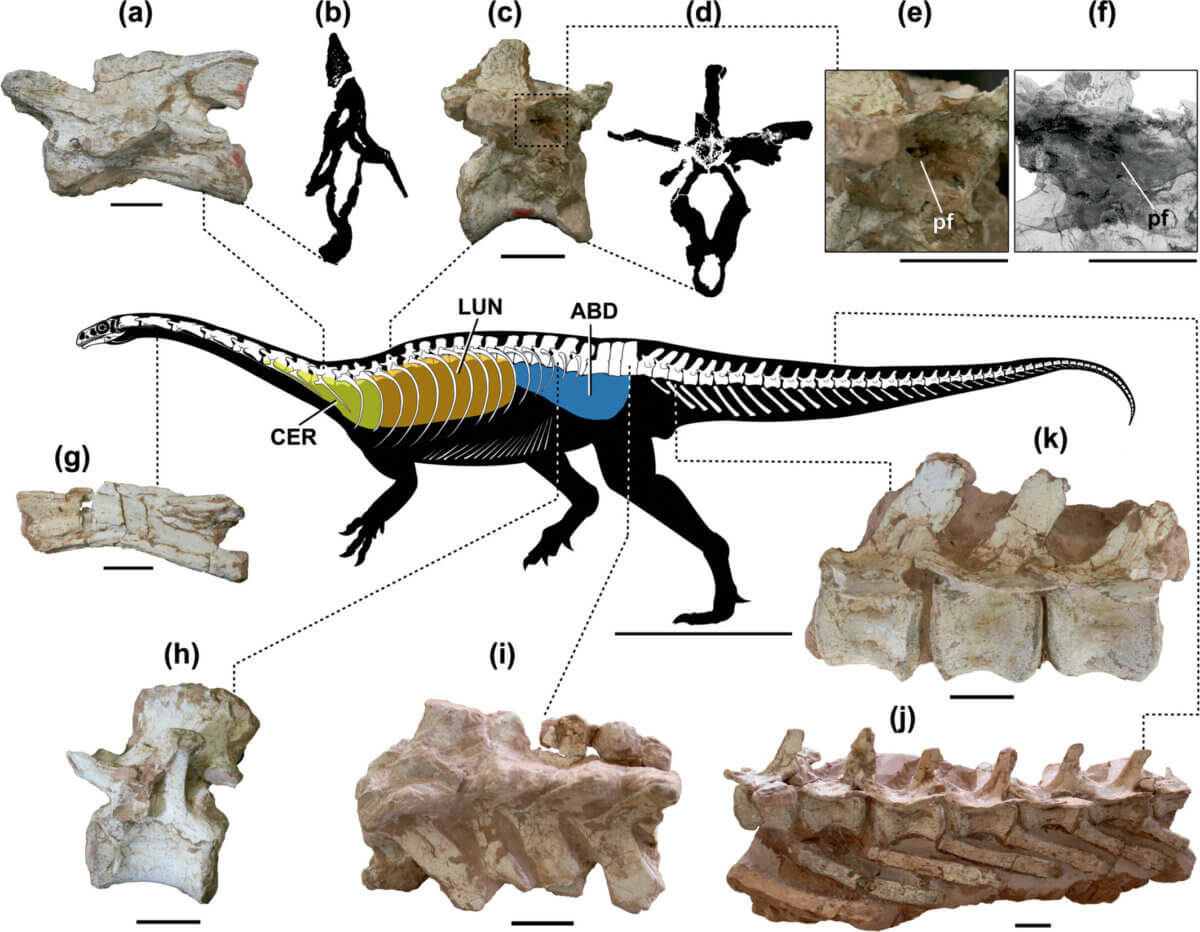Sao Paulo, Brazil – How did dinosaurs transform from tiny creatures into gigantic giants? Researchers at Campinas State University (UNICAMP) in the state of São Paulo, Brazil, believe they finally have the answer. In a new study, they explain the structures of the air sacs in ancient dinosaur Macrocollum itaquii It is the key to understanding the evolution of dinosaurs that still captivate our imagination.
Macrocollum itaquii, which roamed southern Brazil about 225 million years ago, is the oldest studied dinosaur with air sac structures. These bony cavities, also found in modern birds, played a vital role in helping dinosaurs take in more oxygen, regulate their body temperature, and survive the harsh conditions of their era. These adaptations are what allowed some dinosaurs, such as the mighty tyrannosaurus rex And Brachiosaurusto grow into huge creatures.
“The air sacs made their bones less dense, allowing them to grow to be more than 30 meters in length,” says Tito Aureliano, lead author of the study. Media release.
The research, which was conducted as part of Aureliano’s PhD thesis, sheds light on how the largest dinosaurs of their era evolved from a mere one meter to reaching astonishing lengths. The study was part of the broader project “Taphonomic Landscapes” funded by the Foundation for Research in São Paulo (FAPESP) to investigate the conservation and fossilization of organisms.

Frisia Riccardi Branco, a professor at UNICAMP and lead researcher on the project, highlighted the importance of M. itaquii in the context of dinosaur evolution.
“This dinosaur walked the earth during the Triassic period and paved the way for the remarkable diversity that we see in the Jurassic and Cretaceous periods. The presence of air sacs gave dinosaurs an evolutionary advantage over other groups, allowing them to diversify rapidly,” explains Riccardi Branco.
The latest discovery challenges previous assumptions about the evolution of air sacs. The team found internal air chambers M. itaquii, a new type of tissue with a mesenchymal texture that they propose to call “protocameras”. This finding contradicts the widely accepted hypothesis that air sacs evolved from the structures of cams to those of camels. The researchers also discovered that the air sacs were found in the cervical and dorsal regions of the dinosaur’s spine, contrary to previous theories that they only appeared in the abdominal region.
“It seems that evolution experimented with different shapes until it reached the final system, in which the air sacs extended from the cervical region to the tail. It was not a linear process,” Aureliano explains.
By revealing the role of air sacs in dinosaur evolution, this study provides invaluable insights into the extraordinary world of these prehistoric creatures. Discovery M. itaquii The unique anatomical features are revolutionizing our understanding of dinosaur evolution, paving the way for more exciting discoveries about their ancient existence.
The results have been published in the journal anatomical record.
You may also be interested in:


“Reader. Infuriatingly humble coffee enthusiast. Future teen idol. Tv nerd. Explorer. Organizer. Twitter aficionado. Evil music fanatic.”
